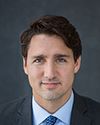Great. Thank you very much, Mr. Chair.
Mr. Chair, members of the committee, thank you very much.
On behalf of the City of Ottawa, my council colleagues and Councillors Katherine Hobbs and Rainer Bloess, I want to thank you for the opportunity to appear before you this morning.
It's really a great pleasure to address you and provide you with the City of Ottawa's objectives for the celebration of the 150th anniversary of Canada's Confederation in 2017. The last time I appeared before a parliamentary committee was when I was president of the Canadian Tourism Commission and I'm now sitting beside my successor, Michele McKenzie. It's a great pleasure to be with her as well.
This promises to be an exciting and one of the most significant milestones in our country's history. My hope is that our nation's capital will be the epicentre for such an important and significant celebration, uniting Canadians from coast to coast to coast.
I remember, as I'm sure many of you do, watching with great excitement the 2010 Olympics in Vancouver and Whistler, and being amazed and moved by the incredible show of patriotism that Canadians displayed during those 17 days on the west coast. The entire downtown core was transformed into a sea of red and white, an incredible display of patriotism and pride in our nation.
Just as Vancouver owned the 2010 Olympics, and Quebec City owned the 400th anniversary of the founding of that city, and Toronto will own 2015 as the Pan Am Games are hosted that year in the greater Toronto area, we have but one nation's capital and I believe that Ottawa can and must own our nation's 150th birthday in 2017.
Jean Pigott, a former Conservative member of Parliament, beloved citizen of our community, and chair of the National Capital Commission, once said that “Ottawa should be considered every Canadian’s second home town”. It doesn't take away from the excitement of activities that will take place in your communities, but we like to think of our nation's capital, your nation's capital, as every Canadian's second home town.
But in order to accomplish this goal, a lot of hard work and cooperation between many stakeholders needs to take place. Although the 150th anniversary is a little more than five years away, it is crucial that we start planning for it now.
Five years, as we all know, will go by very quickly and I want you to know that the City of Ottawa is ready and very willing to play a significant role in the organization and execution of this important milestone. In fact, our planning is already under way.
In my state of the city address in January I asked two city councillors, Councillors Hobbs and Bloess, who are with me today, to co-chair a city task force on Canada's 150th anniversary. With them leading the charge, our goal is to make sure that Ottawa is ready to roll out the red carpet in 2017 and throughout the entire year leading up to and culminating in an incredible spectacle of celebration on July 1, 2017. That should be a year for all of us to remember, just as many of us—and I was only six at the time—remember the excitement of Expo 67 and Man and His World in Montreal.
Ottawa must aggressively go after national and international conferences, annual general meetings, sporting and cultural events, and conventions and trade shows.
The city took a significant step forward in attracting major events to the capital with the creation of a major events attraction office, in partnership with Ottawa Tourism.
The office is being tasked to attract and support large-scale cultural and sports events that have positive benefits to the economy. The formula is very simple: bid more, win more, host more. We've proven that Ottawa is a solid and capable host city.
Just this year, for instance, we hosted the 2012 National Hockey League All-Star Game and the 2012 Juno Awards, both of which were a tremendous success for the local economy, bringing accolades from across the industry for our successful organization and execution.
We're looking forward to hosting a number of other significant events this year, including the Association of Municipalities of Ontario, and the 2013 International Ice Hockey Federation Women's World Championship. We're also in the process of bidding, and we're on the short list, to host the 2015 FIFA Women's World Cup of Soccer. And we hope to find the Junos back in the nation's capital for the sesquicentennial in 2017.
We are very fortunate in Ottawa to have the support of so many partners, whose assistance helps make these events so successful. I am pleased to report that a number of our city's partners are excited about taking part in the 2017 task force.
In collaboration with the Tourism Development Council, the following organizations will assist the city as it welcomes the country and the world in 2017: Ottawa Tourism; our beautiful new convention centre that was funded in part by the federal and provincial governments; the Ottawa Chamber of Commerce; the Ottawa Airport Authority that just won the “Best Airport in North America” designation; the Ottawa Senators; the Ottawa Festivals; and our city's economic development team. Several other groups are also going to be part of the task force, including Regroupement des gens d'affaires de la Capitale and the new CE Centre located out by the airport.
We're hopeful to partner with other organizations such as the National Capital Commission, and we've worked closely with them as well as Canadian Heritage. I had the opportunity to talk to Minister Moore about the 2017 events just a few weeks ago, as I did with the Prime Minister last month.
We're hoping to move forward with the goal of hosting the most extraordinary and memorable sesquicentennial celebrations. My vision is not just to limit the celebrations of the 150th anniversary to 2017, but also to have legacy projects that will have a lasting impact, projects that will serve as a national reminder to all Canadians about our heritage and contributions to the world. We believe Heritage Canada, the NCC, and the federal government have a crucial role to play in the creation of such legacy projects. No doubt many ideas will be presented by people from all walks of life.
In my remaining minutes, Mr. Chair, I want to highlight some of the suggestions that I've discussed with the Prime Minister and Minister Moore.
The old U.S. embassy located right across from Parliament Hill on Wellington Street can be and should be a showcase of Canadian innovations and achievements—in essence, our version of the Smithsonian in Washington. For example, after they've toured Parliament Hill I can see students and parents alike walk across the street to this beautiful building that would have our treasure chest of Canadian achievements and accomplishments: Céline Dion's first gold record, a replica of the Canadarm, Bryan Adams's first guitar, Sidney Crosby's stick from the gold-medal winning game in the Olympics, a Banting and Best chemistry set, Terry Fox's famous T-shirt, and Bombardier's first snowmobile. In essence, it would be Canada's chance to brag about some of the great Canadians and their formidable achievements.
I'd also propose converting Canada Day into Canada Week, a week-long celebration of Canadian talent, culminating on July 1 with the biggest and proudest party in the country. We spend close to 10 days putting up the infrastructure, the sound and staging for, one day. Let's celebrate that for all of Canada's regions. Take a page from the National Arts Centre, which has had a successful scene series, with the B.C. Scene, the Prairie Scene, the Northern Scene, the Quebec Scene, the Ontario Scene, and the Atlantic Scene, where groups and individual performers from all these regions have one day dedicated to their accomplishments leading up to July 1, 2017.
The City of Ottawa is very excited about the upcoming 150th anniversary celebrations, and we are committed to making this a most memorable moment in Canadian history.
We will need some support and direction on what the federal government's plans are for Canada's 150th. Our request to you, through this committee, which we thank for taking this on as an initiative, is that we need to get a clear direction on how the federal government plans to celebrate and what resources, if any, are going to be available.
In closing, I'd like to thank you, Mr. Chair. I know that your background and history in tourism is commendable. I'd also like to thank Mr. Brown, whom I've know for many years, who suggested that I come before this committee and talk about our excitement in celebrating Canada's sesquicentennial in 2017.
Merci beaucoup. Thank you.









